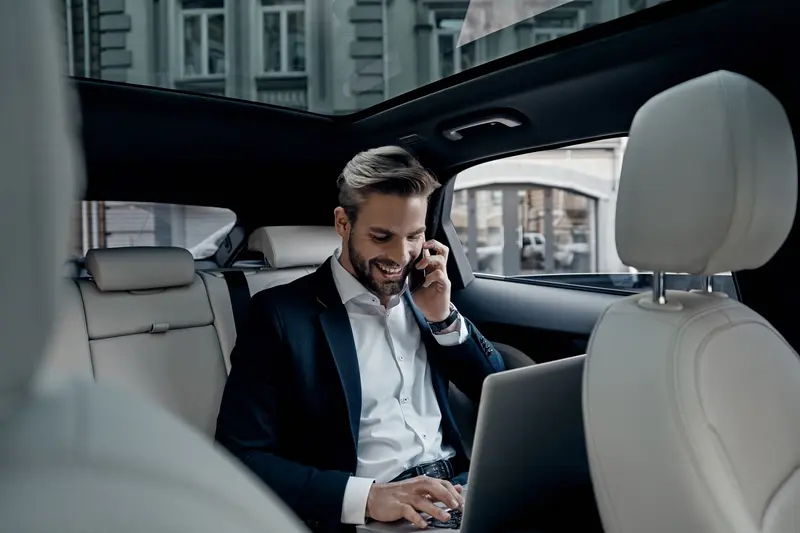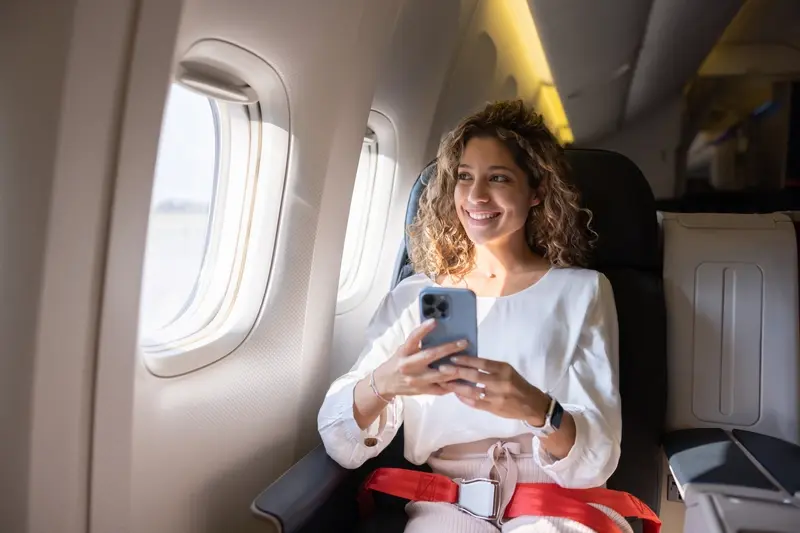What Features Do High-End Customers Expect In Luxury Apps?
High-end customers spend three times more per app purchase than average users, yet abandon apps 40% faster when their premium expectations aren't met. This stark reality shapes every decision we make when designing luxury mobile applications. The difference between a standard app and one that satisfies affluent users isn't just about adding expensive features—it's about understanding a completely different mindset and set of brand requirements.
When someone pays £50 for a premium app or subscribes to a high-tier service, they're not just buying functionality. They're investing in an experience that reflects their status and values. These high-end users have been conditioned by luxury brands across every industry to expect perfection, and they won't settle for anything less in their mobile experience.
The luxury customer doesn't just want an app that works—they want an app that works flawlessly, looks impeccable, and makes them feel special every time they use it
Throughout this guide, we'll explore exactly what separates premium app experiences from ordinary ones. From the visual design standards that matter most to the performance benchmarks that can't be compromised, each chapter will give you practical insights into creating apps that truly satisfy discerning users. Whether you're building for luxury brands or targeting affluent consumers directly, understanding these expectations will make the difference between success and expensive failure.
Understanding Premium App Users
Let me tell you something about premium app users that might surprise you—they're not just people with deep pockets looking for the most expensive option. After working with luxury brands for years, I've learnt that high-end customers have completely different expectations and behaviours compared to your average app user.
These users typically earn six figures or more, they're used to premium service in every aspect of their lives, and they expect the same level of quality from their mobile experiences. They don't mind paying for apps; in fact, they often prefer paid options because they associate higher prices with better quality and service.
What Makes Premium Users Different
Premium users are incredibly time-conscious—they value efficiency above almost everything else. They'll abandon an app faster than you can say "loading" if it doesn't perform flawlessly. These customers are also more likely to contact support when something goes wrong, and they expect immediate, personalised responses.
Here's what I've noticed about their behaviour patterns:
- They rarely read lengthy tutorials or instructions
- They expect apps to work intuitively from the first tap
- They're willing to pay premium prices for exceptional experiences
- They value privacy and security above convenience
- They expect regular updates and new features
Understanding these users means recognising that they're not just buying an app—they're investing in a service that needs to match their lifestyle and standards.
Visual Design Standards That Matter
When you're dealing with premium expectations from high-end users, visual design becomes absolutely critical. I've worked with luxury brands who've spent months perfecting a single button design—and honestly, it makes all the difference. These users aren't just looking at your app; they're judging it within seconds of opening it.
The devil is in the details here. Typography needs to be crisp and consistent across every screen. Spacing should feel deliberate, not cramped. Colour palettes must reflect the brand requirements while staying accessible. High-end users notice when elements don't align properly or when animations feel choppy—trust me, they'll switch to a competitor faster than you can say "design system".
Motion Design That Feels Premium
Smooth transitions and micro-interactions separate luxury apps from their cheaper counterparts. We're talking about subtle animations that guide users naturally through the experience. Button presses should have tactile feedback; screen transitions need to feel fluid, not jarring.
Consistency Across All Touchpoints
Your app's visual language must match the brand's overall aesthetic. If they have a premium website, your app better feel like it belongs in the same family. High-end users expect seamless brand experiences—any disconnect will undermine their confidence in your product.
Test your app's visual hierarchy with real users early and often. What looks perfect on your design mockups might not translate well to actual usage patterns.
Performance Expectations That Can't Be Compromised
When you're dealing with high-end customers, there's one thing that will kill your app faster than anything else—poor performance. I've seen beautiful, feature-rich apps completely fail because they took too long to load or crashed at the worst possible moment. Your luxury app users won't wait around for sluggish interfaces or forgive you for interrupting their workflow.
Load times need to be lightning fast. We're talking under two seconds for most screens, and that's being generous. Premium users have premium expectations, and they're used to things just working. If your app takes five seconds to open, they'll delete it and find something that respects their time better.
Smooth Animations and Zero Lag
Every swipe, tap, and transition should feel buttery smooth. Jerky animations or delayed responses make your app feel cheap—something luxury users will notice immediately. The good news is that modern development frameworks make this achievable, but it requires careful attention during the build process.
Reliability Under Pressure
Your app needs to handle heavy usage without breaking a sweat. Premium users often multitask heavily and expect your app to work perfectly whether they're on a slow connection or running multiple apps simultaneously. Crashes are absolutely unacceptable in the luxury app space.
Personalisation Features High-End Users Demand
High-end users don't just want apps that work—they want apps that work for them. After years of building luxury applications, I've learned that personalisation isn't just a nice-to-have feature for premium users; it's an absolute requirement. These users expect their apps to understand their preferences, learn from their behaviour, and adapt accordingly.
The most successful luxury apps I've worked on include smart recommendations based on past purchases, location-based suggestions, and customisable interfaces that let users arrange content exactly how they want it. Premium expectations include features like personal shopping assistants within retail apps, tailored content feeds, and even personalised colour schemes or layouts.
Smart Learning That Actually Works
What separates good personalisation from great personalisation is the intelligence behind it. High-end users notice when an app remembers their coffee order, suggests restaurants based on their dietary preferences, or automatically adjusts settings based on the time of day. They want their apps to be proactive, not reactive.
The best luxury apps don't just collect data—they use it to create meaningful experiences that feel almost magical to the user
Brand requirements often include sophisticated preference engines that can handle complex user profiles. These systems need to balance automation with user control, allowing people to fine-tune their experience without overwhelming them with options. The key is making personalisation feel natural and helpful, never intrusive or creepy.
Security and Privacy Must-Haves
When you're dealing with high-end customers, security isn't just a nice-to-have—it's absolutely non-negotiable. These users often have significant wealth, valuable personal information, and frankly, they're prime targets for cybercriminals. I've worked on luxury apps where a single security breach could cost millions in damages and destroy years of brand reputation building.
Premium users expect military-grade encryption for all their data, whether it's stored on their device or transmitted to your servers. They want multi-factor authentication that actually works smoothly (not the clunky kind that makes you want to throw your phone out the window). Biometric authentication like fingerprint and face recognition should be standard, not optional.
Privacy Controls That Matter
High-end users are incredibly privacy-conscious. They want granular control over what data gets collected and how it's used. Think detailed privacy settings, not just a basic on/off switch.
- Transparent data collection policies written in plain English
- Easy-to-find privacy controls within the app
- Regular security audits and certifications
- Option to permanently delete all personal data
- Clear notification when data is being accessed or shared
Remember, these users will often have their lawyers review your privacy policy before signing up. Make sure your security measures can withstand that level of scrutiny.
Seamless Integration Requirements
High-end users don't live in isolation—they've got ecosystems. Their Apple Watch talks to their iPhone, which syncs with their MacBook, which connects to their smart home. When you're building for premium expectations, your app needs to play nicely with everything else in their digital world.
I've worked with luxury brands where users expected their app to integrate with their calendar, their CRM, their payment systems, and even their car's infotainment system. These aren't nice-to-have features for high-end users; they're table stakes. If your app forces them to switch contexts or manually input data they've already entered elsewhere, you've broken their flow.
API Integration Standards
Your app should connect seamlessly with popular services like Salesforce, Microsoft 365, Google Workspace, and industry-specific platforms. Single sign-on isn't just convenient—it's expected. Brand requirements often include custom integrations with existing enterprise systems, which means your development team needs to be flexible and skilled at working with various APIs.
Cross-Platform Consistency
Whether they're using your app on their phone, tablet, or through a web portal, the experience should feel consistent. Data should sync instantly, preferences should carry over, and they shouldn't have to learn different interfaces for different devices.
Always build with APIs from day one, even if you don't need integrations immediately. High-end users' needs evolve quickly, and retrofitting integration capabilities is expensive and time-consuming.
Customer Support Standards for Luxury Apps
When I'm working with luxury brands, one thing becomes crystal clear straight away—their customers expect support that matches the premium price they're paying. We're not talking about basic FAQ sections or standard chatbots here. High-end users want real people who understand their needs and can solve problems quickly.
The support experience needs to feel personal from the moment someone reaches out. Live chat should connect users to actual humans within seconds, not minutes. Phone support must be available during extended hours, and email responses need to arrive within an hour maximum. I've seen luxury apps lose customers simply because they took too long to respond to a simple question.
What Premium Support Really Looks Like
Your support team should know each customer's history, preferences, and previous interactions. When someone contacts support, they shouldn't need to explain their situation from scratch every single time. The best luxury apps I've worked on include support features that feel almost invisible—problems get resolved before customers even realise there was an issue.
- 24/7 live chat with real humans
- Phone support with no hold times
- Personal account managers for VIP users
- Proactive problem-solving notifications
- Multi-language support teams
The support experience should reinforce why users chose your premium app in the first place. Every interaction is an opportunity to remind them they made the right choice.
Conclusion
After eight years in this business, I can tell you that understanding premium expectations isn't just about adding expensive features—it's about getting the fundamentals right. High-end users don't just want apps that work; they want apps that anticipate their needs and make their lives genuinely easier. They've got standards, and frankly, they should have!
The patterns we've covered throughout this guide all point to one simple truth: luxury isn't about showing off—it's about removing friction. When you're designing for high-end users, every interaction needs to feel effortless. That means lightning-fast performance, intuitive personalisation, and security that works invisibly in the background. These aren't nice-to-haves; they're the baseline.
What strikes me most about working with premium clients is how they value their time above everything else. They'll pay more for an app that saves them five minutes than they will for one that offers fifty features they don't need. This mindset should shape every design decision you make.
Brand requirements for luxury apps aren't just about aesthetics—they're about creating an experience that feels consistent with the premium service your clients expect everywhere else in their lives. Get this right, and you'll build something that truly resonates with discerning users.
Share this
Subscribe To Our Learning Centre
You May Also Like
These Related Guides

How Do I Create A VIP Experience In My Luxury App?

What Makes A Mobile App Feel Premium And Exclusive?



